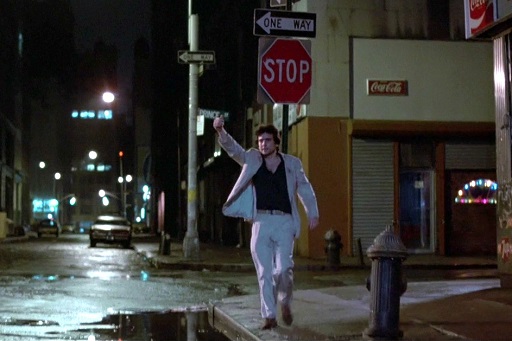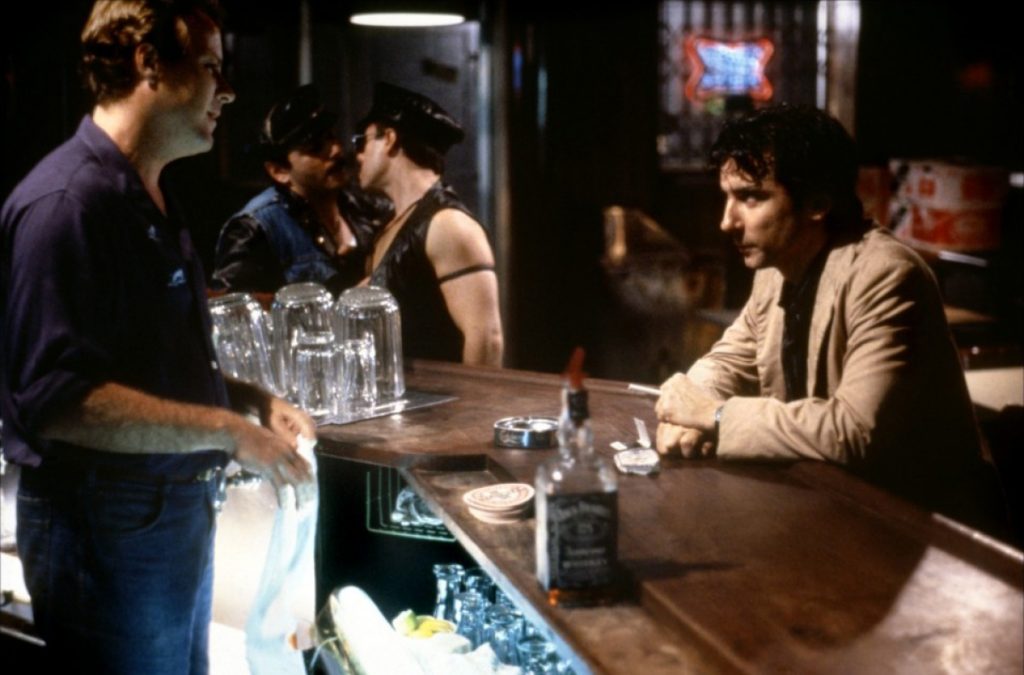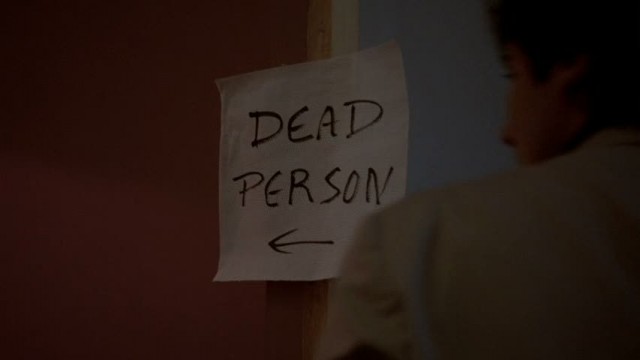I was 17 years old in 2004, it was late, and I’d just got back to my parents’ house after playing a gig with my band The Waxing Captors. As a result, I was tired, sweaty and my voice was shot. I brushed my teeth and rolled into bed, turning on my old Sony CRT TV which I had to slam on the side whenever the colour faded out. This made late night film viewing tricky whilst the rest of the house slumbered.
What do you call “channel surfing” when it’s only five channels? I stick with BBC Two for a scene in which the character in the film looks equally as tired as me. He is a pale man in disheveled linen suit – dwarfed by the vast loft apartment he appears lost in. Flashlights shine through the windows as below at street level a mob searches with silent intent. The 1980s synthesised soundtrack reminds me of a time things were more interesting.
Although I didn’t know it at the time, the movie was Martin Scorsese’s 1985 darkly comic noir ‘After Hours’, which he made as a relatively low-key effort after his first attempt at ‘The Last Temptation of Christ’ fell through. The film’s star Griffin Dunne had shopped the script, written by young unknown Joseph Minion whilst he was still studying screenwriting.
Before ‘real’ internet on your phone, I looked at the newspaper’s TV listings to get the name of the film and made a mental note to follow-up. With 56k modems, it wasn’t a case of streaming a copy of the movie and it was a few months after I’d moved to Norwich for university when I was able to track down an Australian DVD copy.
Despite appearances, After Hours is a funny film; but it had a dark heart. It’s set almost entirely at night, over the course of one date that goes bad. It goes so bad that Griffin Dunne’s Paul Hackett can’t get back home – having lost his only cash out the window of a speeding taxi and then at the worst possible time discovered a natural talent for offending or alienating everyone he encounters in an unwelcoming locale that is acutely not his neighbourhood.
The truth is, he’s an amiable uptown word processing square, for one moment determined to live outside of his comfort zone and impulsively accept a date with a girl who he struggles to relate to, but who clearly excites him. She seems mysterious, talks in semi-riddles, reads Tropic of Cancer – which is, of course, a sexy book.
Paul’s pain is our pain. Speaking as someone who’s done a few dull office jobs in his time – I’ve often grown frustrated with myself for not breaking out of my weekly cycle of work, sleep repeat.
But SoHo is not his world. It incessantly chews him up and spits him out before the picture’s end. Yuppies don’t belong in the bohemian environment depicted here and Paul discovers this to his cost. At one point, he mispronounces Edvard Munch’s name when trying to talk about art and later a group of punks attempt to shave a mohawk into his coiffed hair. Yuppies don’t belong in the bohemian environment depicted here and Paul discovers this in new and exciting ways at every turn.
As such, the humour is relatable, no matter how dark it gets (at one point, Paul witnesses a murder and shrugs “…I’ll probably get blamed for that”). Characters die, though we’re not supposed to mourn them for too long. Instead, we’re pushed deeper into Paul’s nightmare, pursued by an angry neighbourhood who won’t rest until he’s punished for stepping outside of his comfort zone.
As well as the black comedy, it appealed to my surrealist interests at the time. I’d just discovered David Lynch through my friends and Eraserhead was up there in films we were sharing with each other.After Hours is set in then-contemporary New York but the characters encountered late at night are unhinged, whether they’re a ‘60s obsessive or an artist specialising in plaster of paris bagel and cream cheese paperweights.
Their world downtown has its own rules and its own reality. When the mob is shown to be led by the driver of a Mr Softy Ice Cream Truck, we laugh – but to the inhabitants of After Hours, this is their normal. Scorsese’s team worked hard to map out the geography of the neighbourhood Paul is lost in, so even if the people are weird, it all hangs together as real life.
After Hours was among the first films I discovered after childhood, when the box office was beginning to drag and I was furiously trying to find new books, new albums, new films and new ideas to devour. It’s funny, it’s dark, it’s dangerous and it’s surreal. Just like being 17.
Further reading: After Hours features in O.S.S’s abbreviated list of One Crazy Night movies.
Further listening: We discuss these One Crazy Night movies and Martin Scorsese’s After Hours on this podcast.


